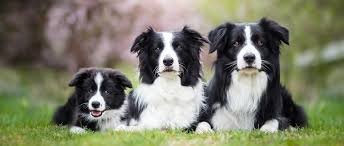When choosing a pet or understanding the differences between breeds, the topic of long haired vs rough haired often arises. Both types of coats bring unique characteristics, advantages, and challenges. Understanding these differences is essential for pet owners who want to provide the best care for their furry companions. This guide dives deep into the specifics of long haired vs rough haired, from grooming needs to health implications, ensuring you make an informed decision.
Table of Contents
What Defines Long Haired and Rough Haired?
Before comparing long haired vs rough haired, it’s crucial to define each term:
- Long Haired: Animals with long, flowing coats that often require regular grooming to avoid tangles and mats. These coats are soft to touch and provide an elegant appearance.
- Rough Haired: Pets with wiry, textured coats that are coarser to the touch. Often seen in specific breeds, rough hair provides a rugged look and serves a practical purpose, such as protection against harsh weather.
Breeds Known for Long Hair
Several breeds are celebrated for their long hair, including:
- Afghan Hound: Renowned for their silky, flowing coats.
- Maine Coon Cats: With their long, dense fur, they are both majestic and fluffy.
- Shih Tzu: A small dog breed with luxurious, long locks.
These breeds highlight the elegance and charm of long hair, making them popular among pet enthusiasts.

Breeds Known for Rough Hair
On the other hand, rough-haired breeds bring a different charm. Some notable examples include:
- Wire Fox Terrier: Known for their distinct wiry coats.
- Border Terrier: Their coarse hair is ideal for outdoor activities.
- Irish Wolfhound: A large breed with a rough, protective coat.

Advantages of Long Hair
The appeal of long hair lies in its:
- Aesthetic Beauty: Long-haired pets often stand out for their elegance and luxurious appearance.
- Soft Texture: Their coats are smooth and pleasant to touch, making them great cuddle companions.
- Versatility in Styling: Owners can experiment with various grooming styles, from braids to trims.
Advantages of Rough Hair
Rough-haired pets, however, offer distinct benefits:
- Durability: Their coats are less prone to tangling, making maintenance easier in some cases.
- Weather Resistance: Rough hair often provides better protection against rain and cold.
- Unique Appearance: The rugged look is eye-catching and sets them apart from their smooth-coated counterparts.

Grooming Needs: Long Haired vs Rough Haired
Grooming is one of the biggest differences between long haired vs rough haired pets. Let’s break it down:
- Long Haired: Requires frequent brushing to prevent mats and tangles. Professional grooming sessions might be needed to maintain their luxurious appearance.
- Rough Haired: Less frequent brushing but regular hand-stripping or trimming is necessary to keep their wiry coat in shape.
Health Considerations
Coat type can impact a pet’s health in surprising ways. Here’s what to watch for:
- Long Haired: Long coats can trap debris, leading to skin irritations if not cleaned regularly. They are also prone to overheating in hot climates.
- Rough Haired: The coarse texture may offer better skin protection, but it can hide skin conditions, making regular checks essential.
Living Environments: What Suits Each Coat?
When considering long haired vs rough haired, think about your pet’s living environment:
- Long Haired: Best suited for indoor living where their coats remain clean and tangle-free.
- Rough Haired: Ideal for active, outdoor lifestyles, as their coats are more durable and low-maintenance in rugged conditions.
Maintenance Costs
Grooming and maintenance are long-term considerations:
- Long Haired: Higher grooming costs due to the need for regular brushing, trims, and sometimes professional services.
- Rough Haired: Moderate grooming expenses, focusing on hand-stripping and occasional trims.
Personality Traits and Coat Type
Interestingly, coat type can sometimes align with personality traits:
- Long Haired: These pets are often perceived as elegant and may have a calmer demeanor.
- Rough Haired: Rough-coated breeds are often active, rugged, and more outdoorsy.
Common Misconceptions
There are myths surrounding long haired vs rough haired pets:
- Long Haired: Some believe they’re always high-maintenance. While grooming is essential, it’s manageable with routine care.
- Rough Haired: Often thought to be hypoallergenic, but this varies greatly among individual pets and breeds.
Choosing the Right Coat for Your Lifestyle
Your lifestyle plays a significant role in deciding between long haired vs rough haired:
- Active families or individuals may prefer rough-haired pets for their resilience.
- Those seeking a more relaxed and visually striking companion might lean toward long-haired breeds.
Grooming Tools for Long Haired vs Rough Haired Pets
Investing in the right tools makes a world of difference:
- Long Haired: Slicker brushes, detangling sprays, and combs.
- Rough Haired: Stripping knives, coarse brushes, and scissors.
Training and Socialization
While coat type doesn’t directly affect trainability, it can influence the pet’s lifestyle needs:
- Long Haired: Often indoor-oriented, they might need more exposure to varied environments.
- Rough Haired: Naturally adventurous, they thrive in diverse settings and benefit from activity-based training.
Also Read: Methatreams: Revolutionizing Digital Solutions for Modern Needs
Final Thoughts on Long Haired vs Rough Haired
When comparing long haired vs rough haired, the choice ultimately depends on personal preference and lifestyle. Long-haired pets bring elegance and require consistent grooming, while rough-haired breeds offer practicality and rugged charm. By understanding their needs and characteristics, you can ensure a harmonious relationship with your furry friend. Choosing between long haired vs rough haired might seem daunting, but with the right knowledge, it becomes an enjoyable decision that fits your life perfectly.


